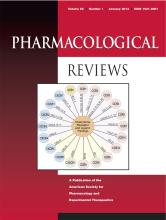Abstract
Morphine and related µ-opioid receptor (MOR) agonists remain among the most effective drugs known for acute relief of severe pain. A major problem in treating painful conditions is that tolerance limits the long-term utility of opioid agonists. Considerable effort has been expended on developing an understanding of the molecular and cellular processes that underlie acute MOR signaling, short-term receptor regulation, and the progression of events that lead to tolerance for different MOR agonists. Although great progress has been made in the past decade, many points of contention and controversy cloud the realization of this progress. This review attempts to clarify some confusion by clearly defining terms, such as desensitization and tolerance, and addressing optimal pharmacological analyses for discerning relative importance of these cellular mechanisms. Cellular and molecular mechanisms regulating MOR function by phosphorylation relative to receptor desensitization and endocytosis are comprehensively reviewed, with an emphasis on agonist-biased regulation and areas where knowledge is lacking or controversial. The implications of these mechanisms for understanding the substantial contribution of MOR signaling to opioid tolerance are then considered in detail. While some functional MOR regulatory mechanisms contributing to tolerance are clearly understood, there are large gaps in understanding the molecular processes responsible for loss of MOR function after chronic exposure to opioids. Further elucidation of the cellular mechanisms that are regulated by opioids will be necessary for the successful development of MOR-based approaches to new pain therapeutics that limit the development of tolerance.
Footnotes
This work was supported by grants from the National Institutes of Health National Institute on Drug Abuse [Grants DA01863 (to J.T.W.), DA027625 (to S.I.), DA020836 (to G.H.), K0-5DA20570 (to C.C.), DA012864 (to Mv.Z.), and DA005010 (C.E.)]; the Deutsche Forschungsgemeinschaft [SCH924/11-2, S.S.], the Deutsche Forschungsgemeinschaft [GRK 1167/-1], and the Federal State of Saxony-Anhalt and the “European Regional Development Fund” [Grant ERDF 2007-2013] (to T.K.); and the National Health and Medical Research Council of Australia [Grants 1011979 and 511914] (to M.J.C.).
- Copyright © 2013 by The American Society for Pharmacology and Experimental Therapeutics
PharmRev articles become freely available 12 months after publication, and remain freely available for 5 years.Non-open access articles that fall outside this five year window are available only to institutional subscribers and current ASPET members, or through the article purchase feature at the bottom of the page.
|






